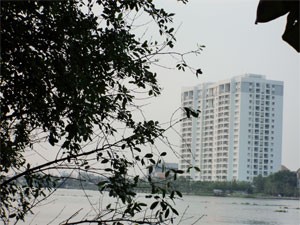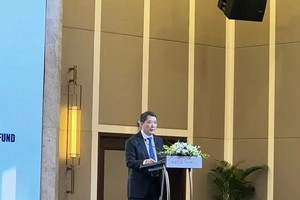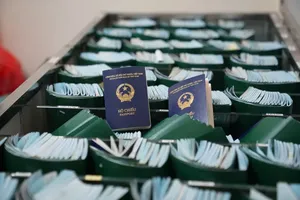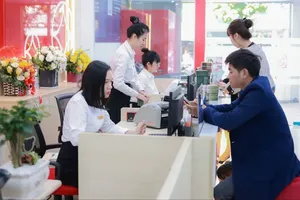Commercial banks started to restrict loans on non-production sectors in accordance with the central bank’s instruction early this year.

Statistics from the State Bank of Vietnam show around 25 commercial banks has property loans that make 25 percent out of the outstanding loans. Among them are some lenders with credit for non-production sectors making 50-55 percent of the total loans.
Lenders said they were limiting credit for non-production sectors, especially property. Asia Commercial Bank, Vietnam’s second-largest joint stock bank, announced it loaned individual clients, who want to buy a house to live. It also offers loans to property projects, which are geared to production sectors.
Tran Phuong Binh, general director of DongA Bank, said the lender stopped providing loans to property projects.
With those borrowing before the issue of the central bank’s instruction, the HCMC-based bank continued to perform the disbursement as it could not ask for an immediate repayment.
“Commercial banks should strictly follow the central bank’s instruction. However, limiting property loans does not mean banning the loans for all clients. It is the time for lenders to reassess their clients, giving priority to those who come up with feasible investment projects and high liquidity,” said Ngo Xuan Dung, managing director of Vietnam International Bank.
Dung added the bank continued to provide loans for clients signing agreements before the issue of the instruction and individual ones who look for a living accommodation.
Trinh Van Tuan, general director of the Orient Commercial Bank, said the bank planned to reduce its credit to non-production sectors, which made more than 30 percent of the total loans, by raising the lending growth rate to 20 percent.
“We stopped offering credit to property and stock investments and focus on asking clients to return debts,” Tuan said.
The State Bank of Vietnam last week reiterated its order to commercial lenders to cut back on credit for non-production sectors and focus on providing loans for small businesses and the agriculture sector.
On March 1 it had already ordered all lenders to limit credit to non-production businesses at 22 percent of total loans by June 30, and at 16 percent by the end of the year. The central bank said it will double reserve requirements for banks that fail to curb their credit growth and continue to lend to non-priority sectors.
The government in February approved a plan to cut annual credit growth to below 20 percent from the initial target of 23 percent as part of a series of measures to curb inflation.
According to a statement on the central bank’s website, its branches around the country will inspect local banks to make sure that the order is strictly followed.
It is not the first time the central bank has called for banks to abide by lending priorities that it has set.













)

)








